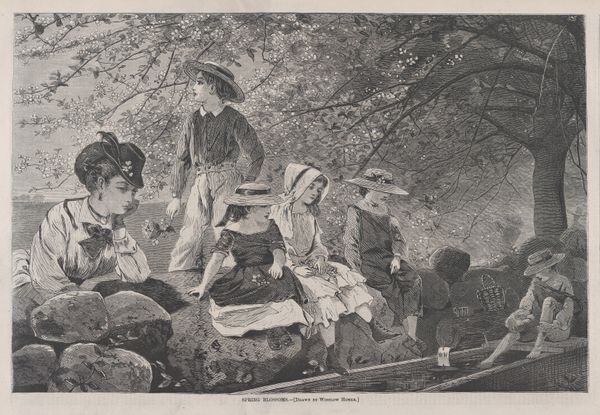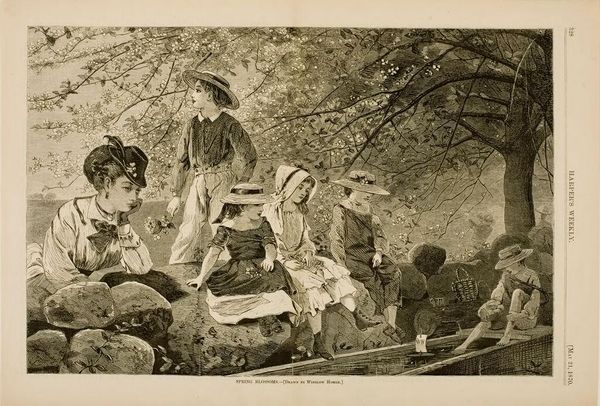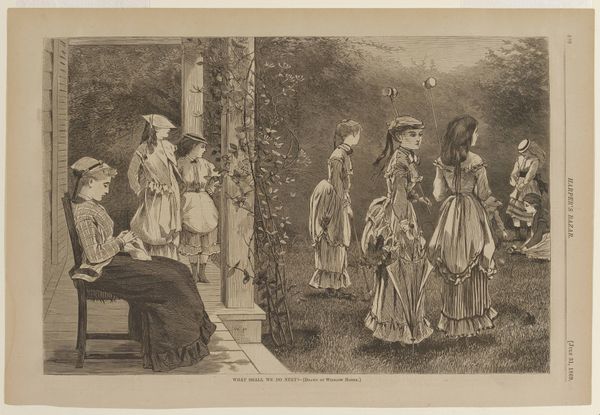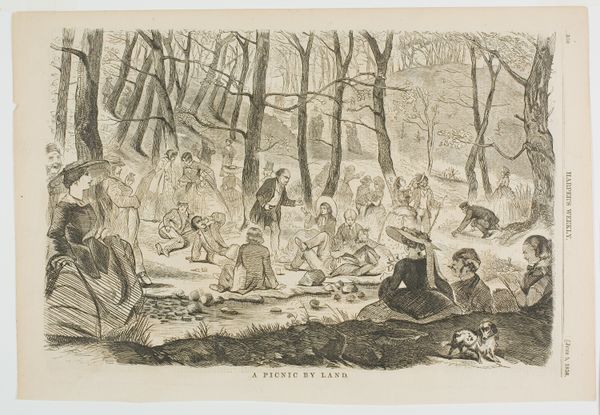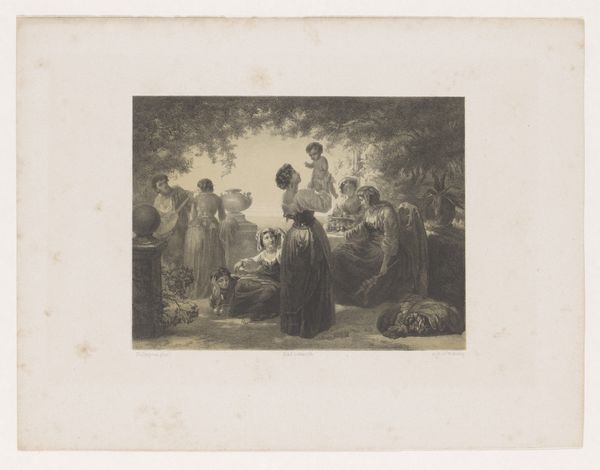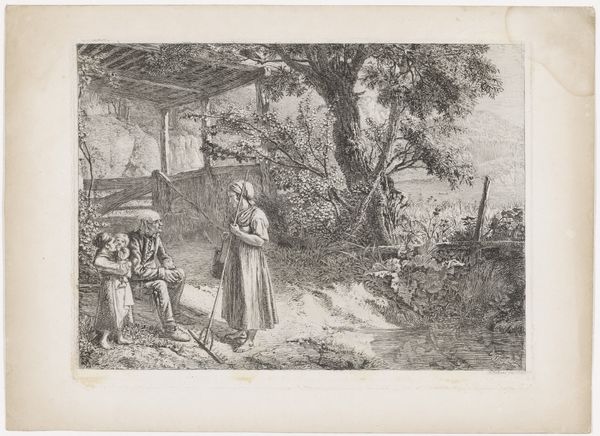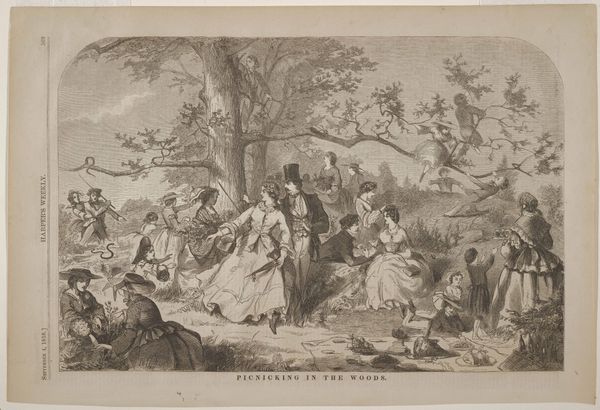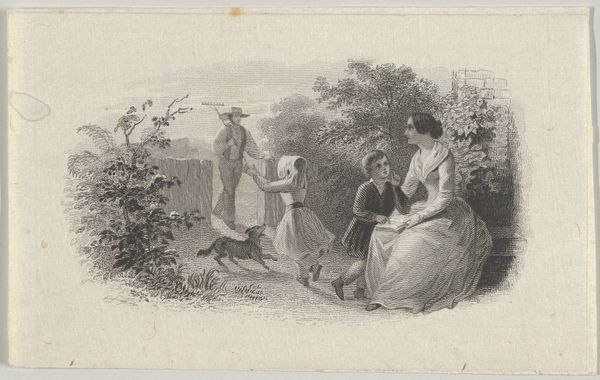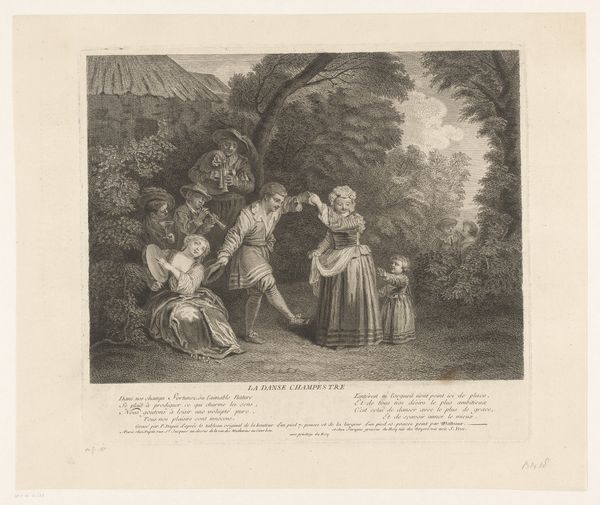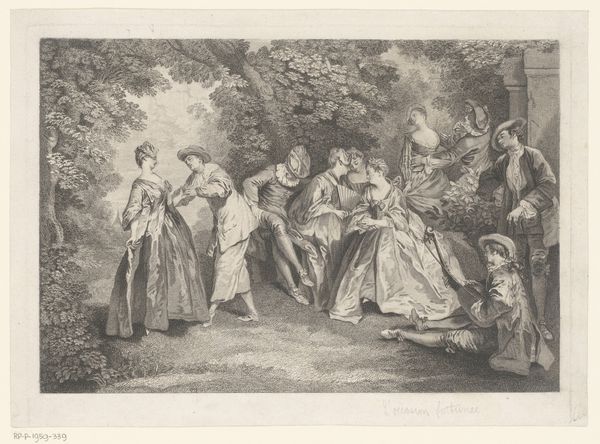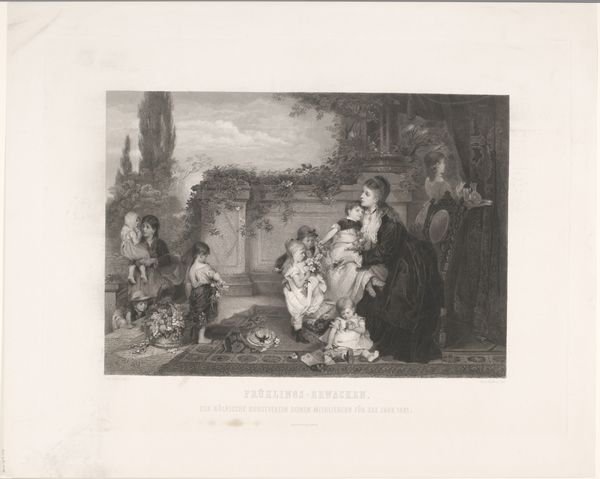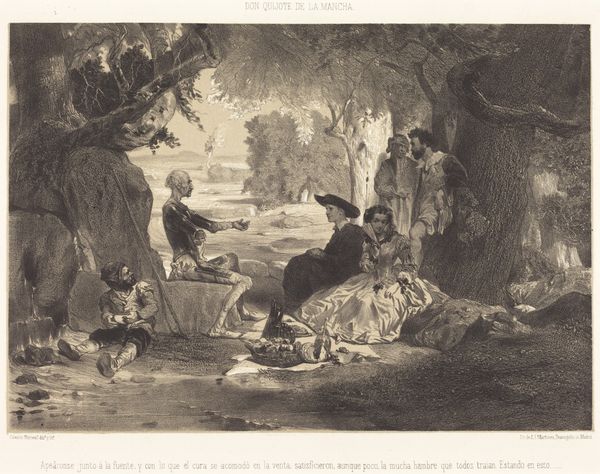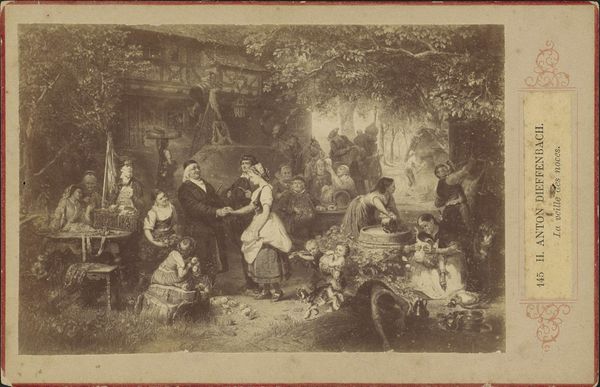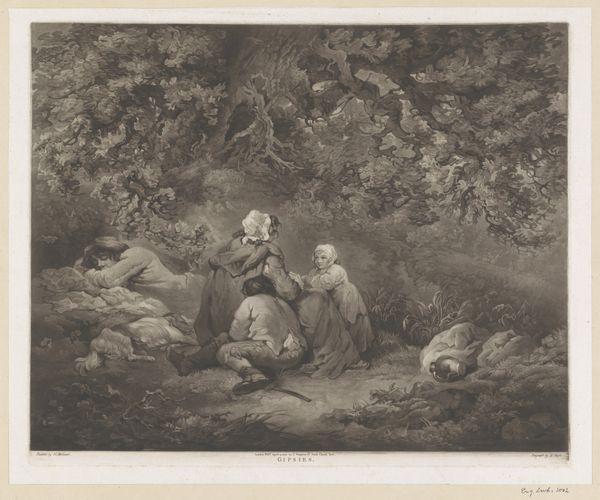
print, etching, woodcut, wood-engraving, engraving
# print
#
etching
#
landscape
#
woodcut
#
19th century
#
united-states
#
genre-painting
#
wood-engraving
#
engraving
Dimensions: 9 1/8 x 13 7/8 in. (23.2 x 35.2 cm)
Copyright: Public Domain
Curator: This is Winslow Homer’s "Spring Blossoms," an etching created around 1870, here at the Minneapolis Institute of Art. Editor: My first thought? Mellifluousness. This composition feels delicate yet deeply complex, full of burgeoning emotion. It captures a very particular… youthfulness. Curator: Indeed. Note the visual textures Homer coaxes from this engraving. Look closely at the distribution of dark and light, how the figures are constructed using only linear marks and tonal contrasts. The foreground and background feel nearly indistinguishable, compressing the figures into the shallow picture plane. Editor: The symbolism is powerful, too. Blossoms, of course, have always represented transient beauty, renewal, the fragility of life. Placing these young figures in the heart of this blooming landscape connects them directly to these themes. Childhood, innocence, also ephemeral states. Do you see the tension, even? The boy gazing off toward something we cannot see, a premonition? Curator: Perhaps. Or it might be Homer’s subtle understanding of asymmetry. The young boy’s averted gaze upsets the potential symmetry in the larger composition. And in truth, very little of the organization reads symmetrically; his mark-making is surprisingly expressive, given that the work was published in Harper's Weekly. This would suggest Homer was allowed great expressive freedom. Editor: It feels very intentional. The composition draws our eye around, involving us. What appear to be carefree children under blossoming boughs is weighted with… is it melancholy? There’s certainly something beyond youthful frivolity at play here. Are we observing mere genre painting or something deeper? Curator: We observe the matrix of the image, the materiality of ink pressed on paper. The meaning we extract comes from understanding how line functions as form and how variations in tonality are designed to signify character and setting. Editor: But isn't that reading the image too coldly? The iconography feels incredibly potent, each element playing into a larger network of signs representing youth, spring, America perhaps? This potent combination creates, for me, an artwork with complex layers of narrative beyond the mere depiction of children at leisure. Curator: Maybe. But by studying his technique, how the individual marks and structural relations inform a larger cohesive image, we recognize the mastery in Homer’s approach to printmaking. It gives form to everything else we are considering. Editor: A perfect distillation of fleeting moments anchored in universal symbols—youth, change, loss—that still resonates powerfully across centuries. Curator: The very form breathes into the viewer an emotional awareness—through pictorial structure and deliberate technique. It allows us to look past subject matter toward a unified artistic vision.
Comments
No comments
Be the first to comment and join the conversation on the ultimate creative platform.
